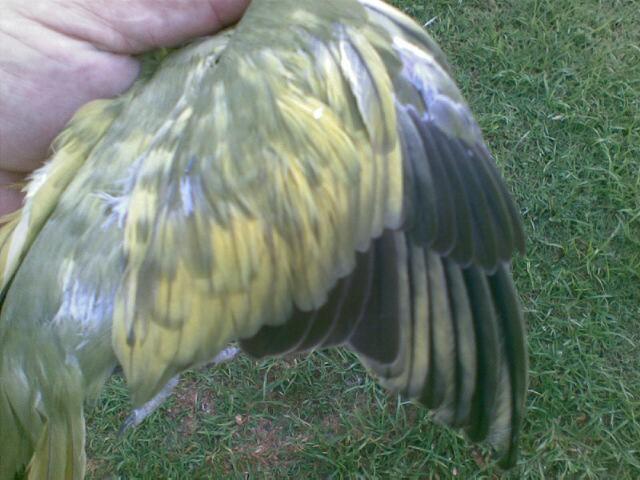Please help identify this mutation for my breeding partner, the bird is over 2 years old and has completed the second molt.
It started off with a few yellow spots on the wings and has progressed to this.
Please lets ignore the progressive pied mutation, so no prizes for calling it a progressive pied !
Please comment on the color as well as this was the pairing, note no progressive pied in at all.
1,0 grey green x 0,1 dark(DF) blue
1,0 50% dark green /blue
1,0 50% grey dark green /blue
0,1 50% dark green /blue
0,1 50% grey dark green /blue


Thanks,
Peter





